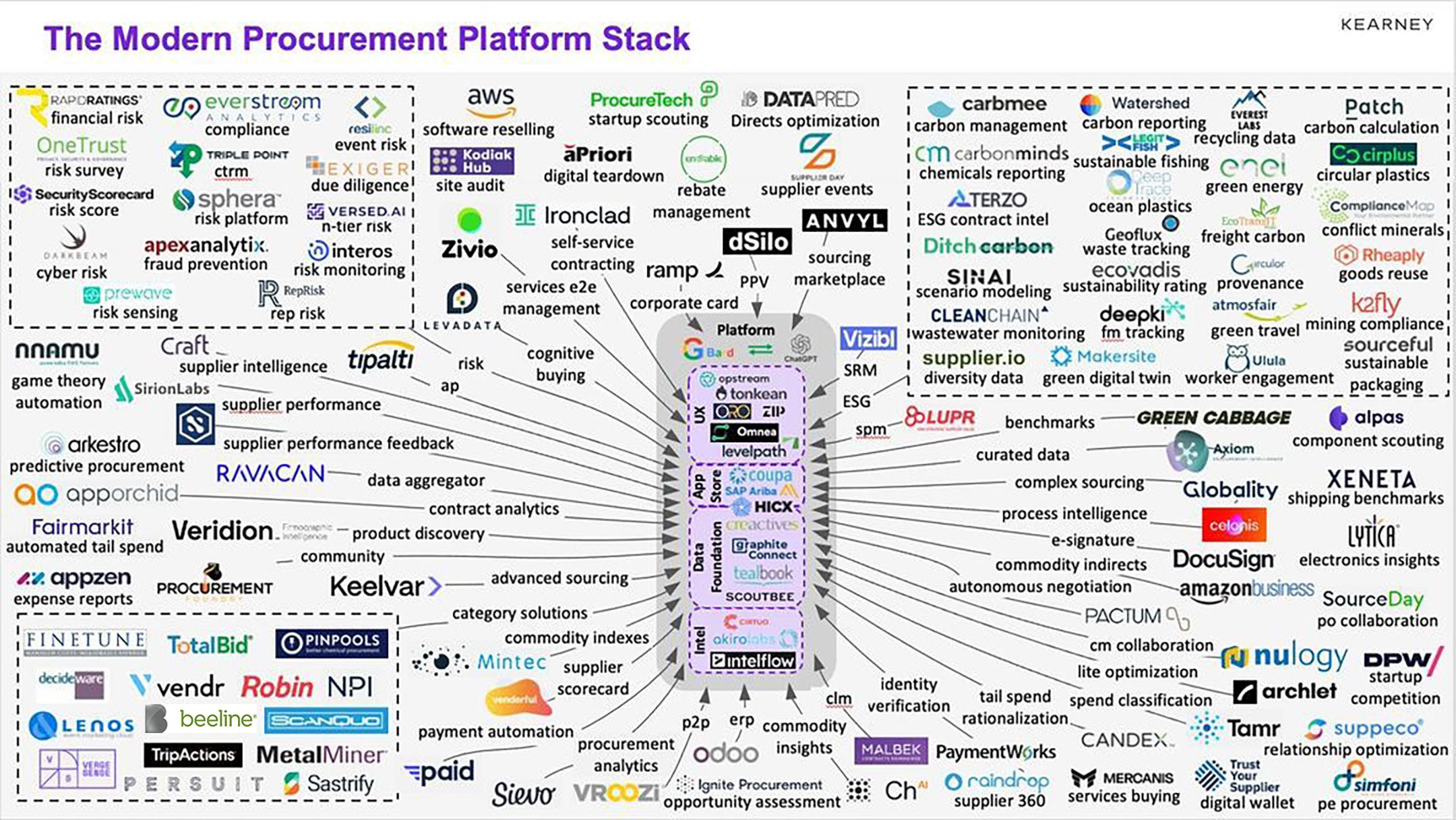Blog
Why ‘We’re an SAP shop’ is not a strategy for talent sourcing
July 25, 2025
Procurement is more involved than ever in delivering talent for an organization through contingent workers and professional services. Success in this ultra-competitive environment requires new approaches to procurement strategy and procurement technology.
Technology
Why “We’re an SAP shop” is not a strategy for successful talent sourcing
Dr. Elouise Epstein is one of the world’s preeminent experts on digital procurement. As a futurist and consultant for Kearney, she helps forward-thinking CPOs meet the challenges of our polarized, post-pandemic world. She coaches them to think beyond chasing “fictional cost savings” and obsolete “best practice” strategies to transform their procurement teams into vital enablers of enterprise success.
In her latest book, “Trade wars, pandemics, and chaos,” Dr. Epstein provides a blueprint for addressing the complexity of procurement and making smart technology investments. She describes the evolution of procurement of technology and explains why some traditional approaches for selecting procurement technologies create more problems than they solve."
Not a strategy, but an excuse
Dr. Epstein describes how the “Application era” of procurement technology (1994-2006) gave way to the “All-in-one suites” era (2007-2016). We are already seven years into the “Ecosystem era” (2017-now), but some procurement teams are still trapped in the previous era. If so, she says, CPOs are failing their teams and companies by abdicating their responsibility to IT.
“The mantra of the past 20 years of procurement mediocrity is, ‘We’re an SAP shop, so we chose Ariba.’ Simply saying ‘We’re an SAP shop’ is not a strategy. It’s an excuse. It’s an abdication of responsibility, a resigned acquiescence that IT must know best.”
Dr. Epstein notes that SAP products may or may not be the proper choice for the circumstances, but their selection should result from deliberate decisions, not simply from IT directives. She goes on to say that IT does know best about a lot of things: "servers, networks, laptops, and so forth." But as digital procurement technology has evolved, CPOs must seize responsibility for selecting the solutions that fit their strategies and not be side-tracked by the excuse that "our IT group won't allow it."
“Nearly every procurement activity generates a tremendous return, traditionally in cost savings and efficiencies, but also increasingly in top-line growth. Why do procurement people have such a low opinion of ourselves that in a conversation with IT, we’d act as if we didn’t deserve to get what we need?”
Instead, Dr Epstein writes that procurement must set its own digital transformation strategy and choose its own path forward, including technology, processes, roles, capabilities, and the speed of change. Procurement must optimize impact, cost, and speed while offsetting risks. IT’s vital role is to support procurement’s strategy.
In this instance, Dr. Epstein reminds CPOs that procurement is the stakeholder. “Never pass up the chance to employ the authority that being the stakeholder confers,” she advises. Otherwise, you have nobody to blame but yourself.”
A new architecture for the procurement ecosystem
In her book, Dr. Epstein likens the emerging world of procurement to our understanding of our physical environment.
“For the past two decades, the procurement profession has labored under the delusion that the world is a flat, linear source-to-pay process. By now, the failure of that vision has become clear. The central argument of this book is that procurement and the way businesses operate today have fundamentally changed. We desperately need a more flexible and extensible architecture to match the way we need to operate in a world of chaos.”
She argues that the procurement world is round and not flat.
“To succeed in this world, you need an ecosystem approach that’s built on a solid data foundation, offers a plug-and-play choice of easily onboarded apps, gives users a delightful, burden-free experience, and features an intelligence layer that produces insights across the entirety of the operating system.”
Dr. Epstein illustrates this new ecosystem architecture with a diagram she calls her spider chart (see figure below). At first glance, it may seem intimidating, but she equates it to the ecosystem of your smartphone. Imagine graphing all the apps available on your iPhone or Android device.

Not every company will use every solution, she suggests. “You may only use five or six of them. But every procurement person should know there’s a bigger universe out there.”
Dr. Epstein explains that her spider chart “represents the procurement value chain deconstructed as we know it today.” It illustrates why having a single sourcing tool is no longer good enough.
“Twenty years of mediocrity have taught us that we need at least five sourcing tools. We need one for basic sourcing, one for tail spend (ideally automated), one for tail-of-the-tail, one for sourcing organization, and one for complex categories.”
A category-specific solution for buying professional services
Among the complex categories Dr. Epstein calls out for “self-serve category-specific solutions” is professional services (a subset of extended workforce talent acquisition). For this and other category-specific solutions (in the lower left corner of the spider chart), she calls for apps that integrate seamlessly with others, use platform-level intelligence, and provide an intuitive user experience. You will find Beeline in this section.
Citing the spider chart as “the single biggest takeaway from this book,” Dr. Epstein notes that “unless one is wedded to the failed state of the status quo,” procurement practitioners must better harness the power of technology and analytics.
How to do digital procurement
The rest of her book provides a tutorial on a “user-friendly way” to make that shift, including a chapter titled “How to do digital procurement.” Importantly, it provides guidance on how to engage with the CIO, articulate procurement’s needs, and overcome blanket IT assumptions “that procurement technology initiatives are somehow not delivering value.”
One value procurement can deliver—when it has the right technology—is an agile and resilient on-demand workforce. As talent scarcity drives procurement to use non-traditional sourcing channels, it is critically important not to limit your technology options to solutions tied to now-obsolescent all-purpose suites.
Tomorrow’s procurement architecture, not yesterday’s
With contingent workers and service contractors making up nearly half the average company’s workforce, any CPO who settles for less than the best talent-sourcing technology is giving away a potential competitive advantage.
Following Dr. Epstein’s prescription, you can implement a procurement architecture that will position your organization to meet today’s and tomorrow’s supply chain challenges—an essential strategy in a world rife with trade wars, pandemics, and chaos.
For information about Dr. Epstein’s book, visit kearney.com.
To learn more, read our blog "Why procurement leaders must become talent strategists."






